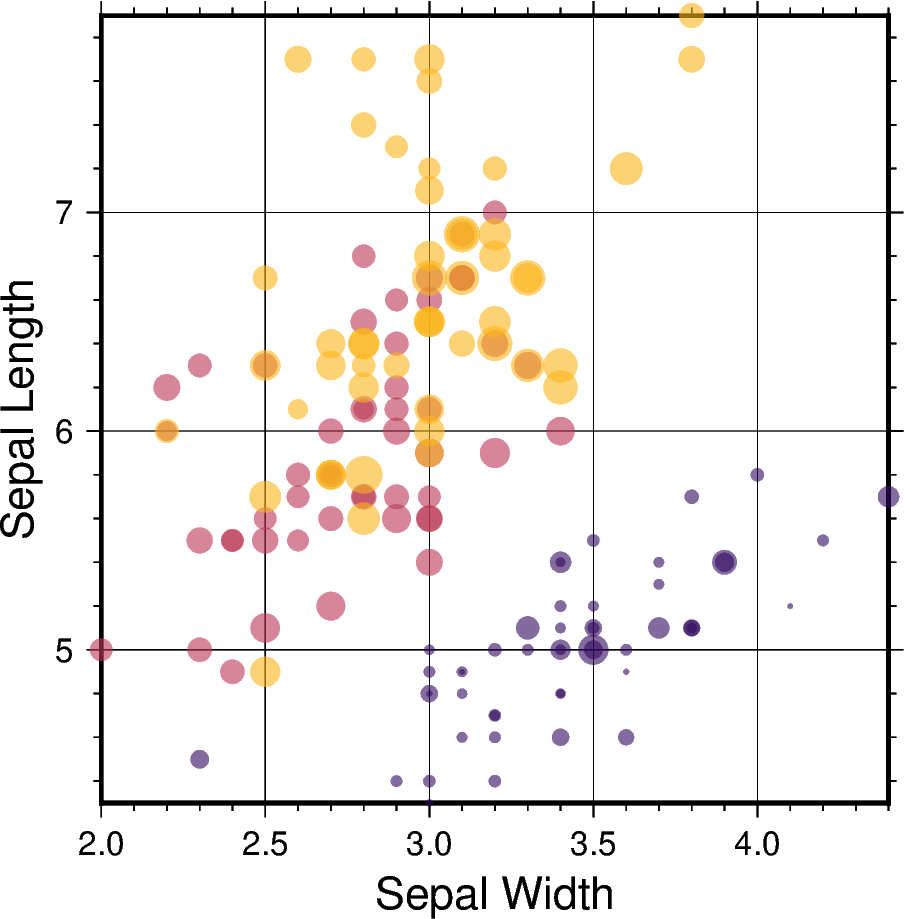Note
Click here to download the full example code
Color points by categories¶
The pygmt.Figure.plot method can be used to plot symbols which are
color-coded by categories.

Out:
<IPython.core.display.Image object>
import numpy as np
import pandas as pd
import pygmt
# Load sample iris data, and convert 'species' column to categorical dtype
df = pd.read_csv("https://github.com/mwaskom/seaborn-data/raw/master/iris.csv")
df["species"] = df.species.astype(dtype="category")
# Use pygmt.info to get region bounds (xmin, xmax, ymin, ymax)
# The below example will return a numpy array like [2. 4.4 4.3 7.9]
region = pygmt.info(
table=df[["sepal_width", "sepal_length"]], # x and y columns
per_column=True, # report output as a numpy array
)
# Make our 2D categorial scatter plot, coloring each of the 3 species differently
fig = pygmt.Figure()
# Generate basemap of 10cm x 10cm size
fig.basemap(
region=region,
projection="X10c/10c",
frame=['xafg+l"Sepal Width"', 'yafg+l"Sepal Length"', "WSen"],
)
# Define colormap to use for three categories
pygmt.makecpt(cmap="inferno", color_model="+c", series=(0, 3, 1))
fig.plot(
x=df.sepal_width, # Use one feature as x data input
y=df.sepal_length, # Use another feature as y data input
sizes=df.petal_width
/ df.petal_length, # Vary each symbol size according to the ratio of the two remaining features
color=df.species.cat.codes.astype(int), # Points colored by categorical number code
cmap=True, # Use colormap created by makecpt
no_clip=True, # Do not clip symbols that fall exactly on the map bounds
style="cc", # Use circles as symbols with size in centimeter units
transparency=40, # Set transparency level for all symbols to deal with overplotting
)
fig.show()
Total running time of the script: ( 0 minutes 1.835 seconds)